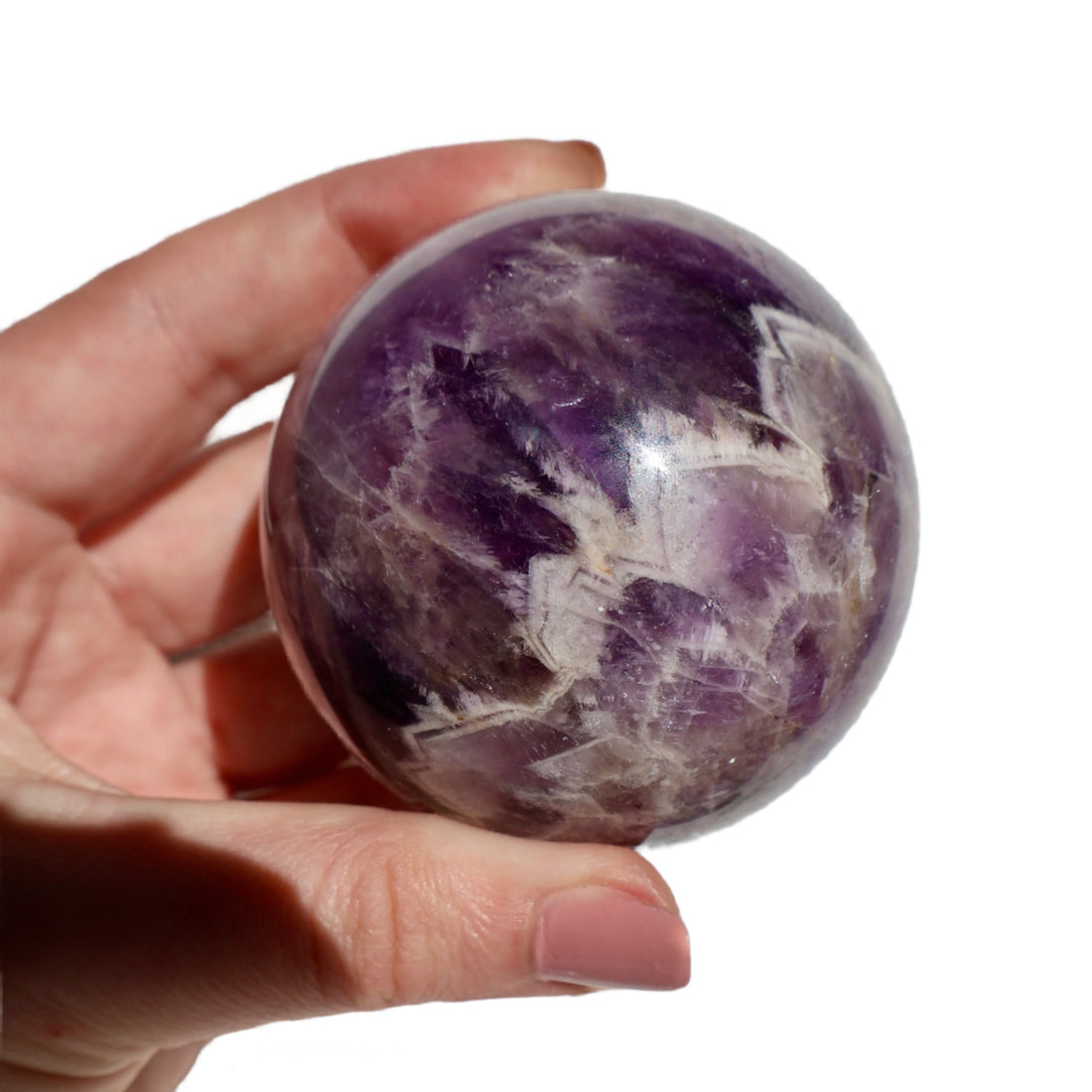Amethyst is the violet-to-purple variety of quartz (SiO₂), colored primarily by trace amounts of iron (Fe³⁺) and exposure to natural ionizing radiation during its geological formation.
Structurally, it belongs to the trigonal crystal system, exhibiting a conchoidal fracture and a vitreous luster. Its coloration can range from pale lavender to deep royal purple depending on the concentration of iron and the duration of radiation exposure within the host rock.
Thermal treatment above ~300°C can alter amethyst to yellow-orange citrine or colorless quartz, a property used both in gem enhancement and in laboratory analysis.
Geologically, amethyst forms in silica-rich environments, commonly within volcanic geodes, hydrothermal veins, and pegmatites. It is often associated with minerals such as calcite, goethite, and other quartz varieties.
Notably, the distinction between natural and synthetic amethyst can be confirmed through trace element analysis, such as LA-ICP-MS, which detects elevated gallium concentrations in natural samples.
Historically, amethyst has been quarried since antiquity, with notable deposits in ancient Egypt, Greece, and the Roman Empire. The name derives from the Greek amethystos, meaning “not intoxicated,” reflecting its cultural symbolism as a protector against drunkenness.
Modern major sources include Brazil, Uruguay, Zambia, and Russia, with Brazil’s Minas Gerais producing some of the largest geodes ever recorded.
From a materials science perspective, amethyst shares the piezoelectric and triboluminescent properties of quartz, allowing it to generate electrical charge under mechanical stress.
These properties have contributed to its use in experimental piezocatalysis research, where natural quartz crystals can degrade organic dyes in water when exposed to ultrasonic vibrations, producing reactive oxygen species.
- Mohs Hardness: 7
- Planet: Jupiter
- Zodiac: Aquarius, Pisces
- Chakra: Crown (Sahasrara)
- Body Part: Brain, nervous system
- Emotion: Calmness, clarity
- Mood: Contemplative, balanced
- Element: Air
Energy Properties: Exhibits piezoelectric and pyroelectric properties; stable dielectric constant; strong trigonal lattice symmetry influences optical birefringence.
Best Way to Cleanse: Rinse with lukewarm water; avoid prolonged UV exposure to prevent color fading.
Best Way to Recharge: Place in indirect sunlight or near a cluster of unpolished quartz.
Best Friends (Complementary Minerals): Clear Quartz, Smoky Quartz, Lepidolite, Sodalite, Silver.
Share


